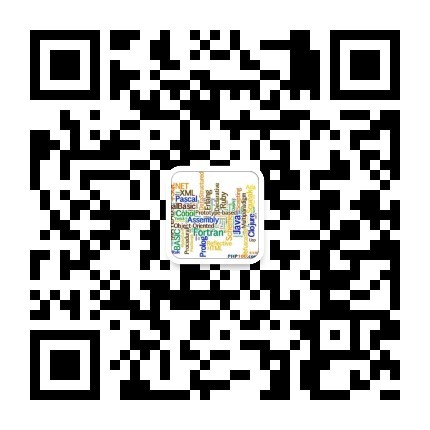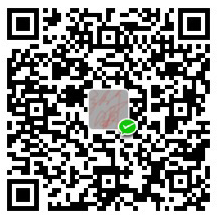Android ConstraintLayout详解
AndroidStudio2.2开始,就推出了一个牛逼的布局,ConstraintLayout,此布局像是一个升级版的RelativeLayout,但是功能比RelativeLayout强大许多,号称一层布局就可以搞定复杂页面。在AS2.2下还可以用拖拽控件的方式就行布局(设计师的福音),不过本篇不讲解拖拽控件的相关用法,主要讲解一些相关属性含义。
想学习拖拽控件设计ConstraintLayout的请点这里。
Android官方教程在此。
本文讲解参考这里,需自备梯子。
开始!
- 相对位置这个相对位置的设置有点类似RelativeLayout的layout_toLeftOf、alignParentLeft等这些属性。
ConstraintLayout一共支持相对位置的属性在此:
layout_constraintLeft_toLeftOf
layout_constraintLeft_toRightOf
layout_constraintRight_toLeftOf
layout_constraintRight_toRightOf
layout_constraintTop_toTopOf
layout_constraintTop_toBottomOf
layout_constraintBottom_toTopOf
layout_constraintBottom_toBottomOf
layout_constraintBaseline_toBaselineOf
layout_constraintStart_toEndOf
layout_constraintStart_toStartOf
layout_constraintEnd_toStartOf
layout_constraintEnd_toEndOf拿第一个属性来说,layout_constraintLeft_toLeftOf=”@+id/id_first”,表示当前View的左边界与id_first的View的做边界对齐。其实这个属性翻译成中文就是:当前view的左边对齐与引用view的左边。
例子:
效果如下:
当然,这些属性也支持设置为对齐父布局的左右前后。
这样,buttonB就依附在父布局的左边。类似Realitelayout的alignParentLeft。
- margin属性这个属性没啥好说的,跟其他布局的margin属性差不多。支持的属性如下:
Android:layout_marginStart
android:layout_marginEnd
android:layout_marginLeft
android:layout_marginTop
android:layout_marginRight
android:layout_marginBottom
注意:如上图,假如A紧贴父布局的左侧,B距离A 100dp,A设置为gone后,则B距离父布局的左侧100dp。
- goneMargin属性这个布局比较有意思,还是拿上面的那副图做示例,假设我们现在有这样一个需求:假设A设置为gone,后,B需要距离父布局的左侧200dp,怎么办?这时候,goneMargin属性就派上用场啦,只要设置B的layout_goneMarginLeft=200dp即可。这样,A不为gone的时候,B距离A 100dp,A为gone时,B距离父布局左侧200dp。
一共支持的属性如下:
layout_goneMarginStart
layout_goneMarginEnd
layout_goneMarginLeft
layout_goneMarginTop
layout_goneMarginRight
layout_goneMarginBottom - Centering positioning and bias ,设置居中或者按比例偏移。
假设我们要设置一个控件居中怎么办?很简单,利用上面介绍过的属性就可以办到。
bias支持的属性如下:
layout_constraintHorizontal_bias
layout_constraintVertical_bias
- ConstraintLayout本身支持minHeight、minWidht属性,没啥好说的。
- 注意ConstraintLayout不支持match_parent属性,要用0dp代替,在加上设置特性的约束属性,即可实现match_parent的效果。
- Ratio 设置宽高比。属性如下:app:layout_constraintDimensionRatio=””
当前控件宽或高其一确定的话,可以使用ration属性,根据确定的宽或高确定另外高或宽的大小。
当前Button的width已经确定,height根据设置的比例=2×width
layout_constraintDimensionRatio接受的值是两个float类型的比例,代表的含义是width:height。
ration属性还支持这样设置:
其中前面的字符H代表Height、W代表Width,谷歌官方的解释是:
In that case, you need to indicate which side should be constrained, by adding the letter W (for constraining the width) or H (for constraining the height) in front of the ratio
翻译过来就是说,W、H代表哪条边应该被约束。什么鬼?完全不理解。
还要经过我代码测试,勉强知晓了前面H、W的意思。上面示例代码的Button高已经确定,宽是高的十六分之九:9/16,如果前面设置位W的话,那么宽的大小是高的九分之十六:16/9倍。
总结:假设比例设置为a:b ,如果前面是H,不论哪一边确定,另外一边的大小都是确定边的b/a倍;如果前面是W,不论哪一边确定,另外一边的大小都是确定边的a/b倍。不知道谷歌是出于什么哲学思想,感觉像是个bug。
- Chains 链状结构。看图如下:
Chain Style
要想chain style生效,必须设置当前链方向的边为wrap_content,比如上面的水平链,宽设为wrap_content。还有就是控件要相互引用,比如A的右边依赖B的左边,B的左边依赖A的右边,都是设置。
chain style设置在第一个控件上
即设置在head上。属性有两个:
layout_constraintHorizontal_chainStyle
layout_constraintVertical_chainStyle
支持的值有三个:
CHAIN_SPREAD:均与分布控件。
CHAIN_SPREAD_INSIDE,同上,但是边上的控件不均匀分布。
CHAIN_SPREAD_INSIDE:控件紧挨在一起。还可以通过bias属性设置偏移量。
根据字面意思这三个属性好理解,效果如下:
Weighted chains:
app:layout_constraintHorizontal_weight
app:layout_constraintVertical_weight
跟线性布局的weight差不多,layout_constraintHorizontal_weight需要设置width=0dp,控件的大小根据设置的weight比例进行设置。 - Guideline
Guideline是一条隐形的线,这条线可作为准线,根据此准线设置其他控件的位置。
上面代码:guideline控件是一条隐形垂直的线,距离左边距100dp,Button由于设置了left_toLeft,所以也距离左边距100dp。
GuideLine支持的属性:
layout_constraintGuide_begin:距离left或top的大小
layout_constraintGuide_end:距离right或bottom的大小
layout_constraintGuide_percent:float类型。距离left或top的大小的比例。
layout_constraintGuide_percent=”0.5” android:orientation=”vertical” ,那么guideline距离左侧的距离为父布局宽度的一半。
转自:http://blog.csdn.net/android_zhengyongbo/article/details/65630103
继续学习
http://blog.chengyunfeng.com/?p=1031







